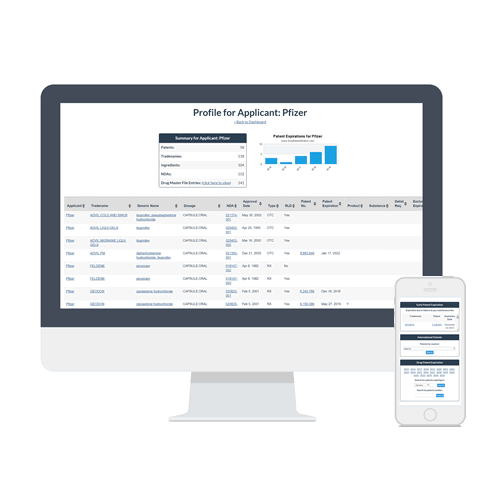 Health care costs in the US touched a staggering $3.2 trillion in 2015, which makes it one of the nation’s largest industries, equaling 17.8% of gross domestic product. This translates to an annual health care expense of $9,900 per person. In 2007, health care per capita hovered around $7,600. The figure reached just $27.2 billion in 1960, only 5% of GDP.
Health care costs in the US touched a staggering $3.2 trillion in 2015, which makes it one of the nation’s largest industries, equaling 17.8% of gross domestic product. This translates to an annual health care expense of $9,900 per person. In 2007, health care per capita hovered around $7,600. The figure reached just $27.2 billion in 1960, only 5% of GDP.
According to the Journal of the American Medical Association (JAMA), healthcare spending went up by $933.5 billion from 1996 to 2013, with more than 50% of the funds coming from intensity and pricing increases. Health cost growth has outrun the recovery of the overall economy, pressurizing governments, healthcare providers, patients and their families.
Table of Contents
Breakdown of Health Care Costs and Factors
Of the five factors studied by the JAMA, only one accounted for a decline in spending, while three were responsible for a hike. There was no apparent difference in spending from the lone factor.
- The increase in the population of the country from 1996 to 2013 resulted in a 23.1% jump in spending, which came to $269.5 billion.
- Intensity and pricing accounted for a 50% growth in spending, amounting to $583.5 billion.
- Aging was associated to an 11.6% increase, amounting to $135.7 billion.
- Disease incidence or prevalence accounted for a decline of 2.4%, translating to a $28.2 billion reduction in spending.
- There was no significant difference in spending linked to disease prevalence.
Rising Health Costs Are Consuming Employees’ Paycheck Gains
Workers in the US are being pressurized by their employers to choose more of the colossal tab because of rising health care costs. The average employee spent $5714 for a family health insurance plan in 2017, 30% of the total cost of $18,764, based on a 2017 Employer Health Benefits Survey conducted by the Kaiser Family Foundation and the Health Research & Education Trust. Five years back, workers shelled out $4,316 of the $15,745 cost, or just 27%.
The expenses rendered on purchasing health coverage at work have outpaced inflation and wages for years, forcing people to constrain their household budgets.
Major Factors Driving Health Care Costs in the US
The two main causes for the increase in US healthcare spending are government policy and change in lifestyle.
Government Policy
Health care spending rose by an average of 8.9% annually between 1960 to 1965. The reason behind this was the expansion of health insurance. There was a sharp increase in the demand for health care services as insurance covered more people. By 1965, people were paying out-of-pocket for 44% of total medical costs and health insurance covered 24% of the expenses.
Health care spending once again went up by 11.9% annually from 1966 to 1973. The main drivers now were Medicaid and Medicare, which covered more people, allowing them to use health care services to the fullest. Senior citizens moved into pricey nursing home facilities. The prices shot up with the increase in demand. Gerard Anderson of the Bloomberg School of Public Health once said that prices are responsible for the heavy level of spending. It was a boom time for health care providers as they invested more funds into research work. This led to the creation of more innovative, but overpriced technologies.
People started heavily depending on Medicare for their physical care needs. Even now, emergency room treatment in the US is extremely expensive, accounting for one-third of overall health care costs. The number of emergency room visits stood at 136 million by 2011. According to the National Center for Health Statistics, a surprising 20% of adults use the emergency room every year.
In late July, 1971, President Nixon rolled out wage and price controls to stop mild inflation. In the beginning, low health care costs led to greater demand. In 1973, he ordered health maintenance organizations to slash expenses. These prepaid strategies restricted people to a specific medical group. Millions of dollars were spent on funding HMOs via Nixon’s HMO Act of 1973. In the same year, the President, ended convertibility of US dollars into gold, a term coined as gold standard. With the plummeting of the dollar’s value, health care costs rose.
Between 1983 and 1992, health care costs increased by 9.9% annually. Congress bolstered Medicaid to include illegal immigrants and would-be mothers. Prescription drug expenses and home health care prices surged by 12.1% and 18.3% respectively per year.
The Medicare Modernization Act combined Medicare Part D to cover prescription drug costs, and then came the Medicare Advantage Program. The number of people using these plans went up by almost 300% to 17.6 million by 2016. The country’s dependence on private health insurance restricted many people gaining access to a health care provider. The Emergency Medical Treatment and Active Labor Act entailed hospitals to treat people who showed up in the emergency room. Many uninsured patients cost these hospitals an astonishing $10 billion per annum. This cost was passed by the hospitals to Medicaid.
Chronic Diseases
The second major cause behind rising health care costs is chronic diseases. According to Kenneth Thorpe, Professor of Health Policy at Emory University, five chronic conditions are the important determinants of the increase in Medicare spending, accounting for a one-third increase since 1987. These conditions include mental disorders (5%), hypertension and kidney disease (6% each), arthritis (7%) and diabetes (8%). The obesity epidemic is also a major contributor to cost growth. The Congressional Budget Office (CBO) estimates that 8% of the growth in health care spending since 1987 can be attributed to obesity. People who are obese spend nearly 40% more on health care compared to normal healthy adults. Furthermore, the lifetime expenses of obese Medicare beneficiaries are 20% to 40% higher. For patients with chronic diseases and conditions, the rising cost of medical care has been a pain point. Here’s a list of the 11 most expensive medical conditions/diseases in the US.
Chronic diseases are among the most common, expensive and preventable of all health problems. It’s surprising to note that as of 2012 about 50% of adults, 117 million people had one or more chronic diseases, according to Chronic Disease Prevention and Health Promotion. These diseases can be prevented or can cost less if detected at an early stage. They cost an extra amount of $7,900 per person, which is 5 times more compared to a healthy person. For example, the average cost of reversing diabetes is $26,971 for a single family. Moreover, they are unmanageable since patients get drained taking various medications. Those who refrain from being treated end up in the emergency room with strokes, heart attacks and other serious complications.
Researchers from the Commonwealth Fund, a private US foundation promoting a high-performance health care system, found that patients with the most medical bills also pay some of the highest out-of-pocket medical expenses even though they were largely covered by Medicare, Medicaid or other forms of insurance. Results also showed that Americans with functional limitations and those suffering from chronic conditions paid nearly four times than other patients.
According to the 2016 “America’s Health Rankings Senior Report,” the number of people with chronic conditions is increasing at an alarming rate and is expected to grow by more than 200% in the next 15 years.
Other Drivers of Rising Costs
Aging
An aging population will significantly impact the federal budget in the years to come. The US will be home to 71 million people aged 65 and more by 2030. The total health cost of an individual doesn’t suddenly rise once the person turns 65. However, the cost to the federal government will increase since Medicare then becomes the primary insurer. In 2012, the CBO stated that over the next 25 years, the aging population will be responsible for 52% of the increase in spending on some big federal health programs. Medicare enrollment is slated to grow by 1.6 million each year, resulting in approximately 81 million beneficiaries by 2030.
Lack of Coordination
Most insurers pay hospitals, doctors and other medical care providers under a fee-for-service system that compensates for each test, visit or procedure. But this encourages overtreatment, which include repetitive tests. This system has failed to provide any incentive to improve co-ordination and has both driven up costs and deteriorated the level of care delivered.
Unhealthy Consumer Behavior
Consumers are constantly engaging in unhealthy behaviors like poor diets and lifestyle. This includes using drugs and alcohol, smoking, poor dental health habits and not wearing seat belts.
Consolidation
While mergers and acquisitions among insurers and medical providers can improve efficiency and assist to drive down prices, consolidation can have the opposite effect. It also allows monopolies in markets and shoots up prices. Hospitals are increasingly acquiring rivals and directly employing physicians, leading to bigger medical systems. This drives up the costs.
Summing Up
The drivers of health care costs growth are multifaceted and complex, with no single driver being responsible for the nation’s rising health care costs. On the same note, no single policy solution will suffice to meet this growing menace. The need of the hour is to collaborate. By doing so, the unsustainable skyrocketing cost of health care can be brought down without too much sacrifice from each sector of the healthcare industry.


